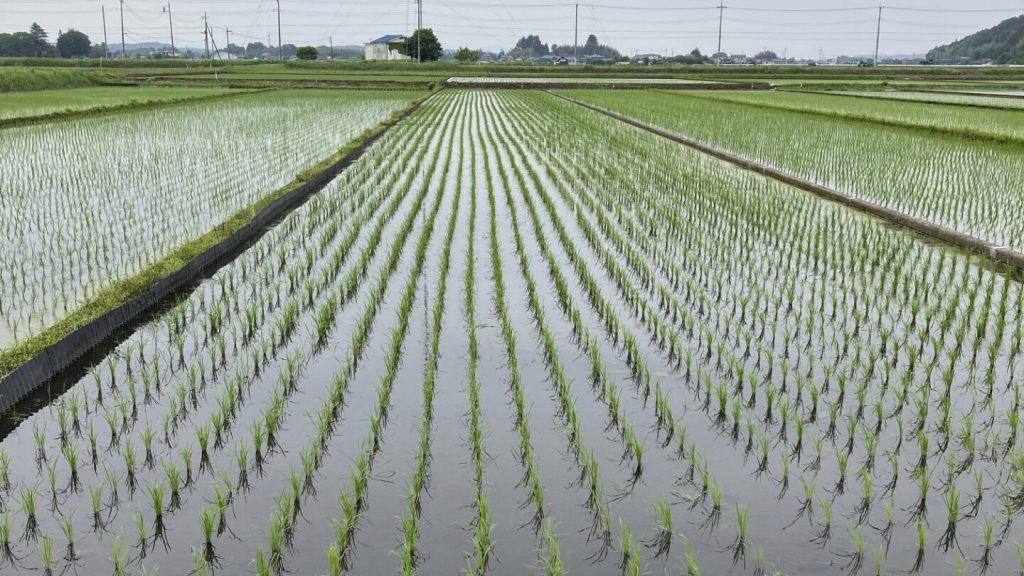TOKYO (AP) — Rice is a cornerstone of Japanese culture, traditions, and politics. The round, sticky Japonica rice continues to be a dietary staple, even as its overall consumption has declined over the years.
However, since last summer, prices have surged due to supply not meeting demand. The government has historically incentivized farmers to reduce rice cultivation and switch to other crops to maintain higher rice prices.
In response to this year’s shortages, the government has started to release rice reserves, but the distribution to supermarkets has been sluggish. This delay contributed to the resignation of the agriculture minister earlier this week.
Consumers are left frustrated and questioning, “Where is the rice?”
Why Did the Agriculture Minister Resign?
Agriculture Minister Taku Eto resigned this Wednesday after igniting backlash with his comment that he “never had to buy rice,” as his supporters give it to him as gifts. This remark was seen as disconnected from the struggles of everyday citizens who are finding it difficult to afford rice. Although Eto apologized, Prime Minister Shigeru Ishiba demanded his resignation to mitigate damage in light of an important national election approaching in July.
His successor, former environment minister Shinjiro Koizumi, is set to investigate and address the rice crisis.
What’s Happening to Rice in Japan?
Rice has been vanishing from supermarket shelves, with prices rising to double their usual rates since last summer due to a warning of a potential “megaquake” that led to panic buying. The popular “Koshihikari” brand now retails for about 5,000 yen ($35) for 5 kilograms (11 pounds). Current stocks at Japan Agricultural Cooperatives and other wholesalers have dropped to a record low of 1.53 million tons, which is 400,000 tons short compared to last year.
As rice crops have just been planted, anticipation of the upcoming harvest heightens the urgency regarding shortages.
Why Are Japan’s Rice Shortages and Soaring Prices Occurring?
Ishiba has committed to lowering average rice prices to approximately 3,000 yen ($20) for 5 kilograms (11 pounds). During parliamentary discussions, he admitted that the government had been unable to effectively lower prices and would first need to ascertain the actual quantity and location of rice supplies. He acknowledged that existing measures are ineffective and pointed to “structural issues” in the government’s rice policies.
Experts attribute last summer’s panic buying as a catalyst for pre-existing troubles, noting increased demand due to rising tourism and dining out. Additionally, a spike in rice consumption occurred after prices for bread and noodles inflated due to the Russia-Ukraine conflict affecting wheat prices. The 2023 harvest also suffered due to extreme weather and pests.
What Actions Have Been Taken So Far?
The Agriculture Ministry has faced criticism for delaying the release of emergency rice reserves, typically held for crises, leading to suspicions about the current market dynamics, as only 10% of the released stocks have reached consumers. Koizumi announced plans to transition to voluntary government contracts for rice to better manage prices while lifting a sale cap. Compounding the situation is a potential deficiency in milling capacity to convert stored brown rice into the white rice favored by consumers. Some wholesalers have also been accused of hoarding rice to keep prices elevated.
Concerns persist that the government has been hesitant to probe deeper into the situation, fearing that releasing reserves could lead to price drops. Experts suggest Japan could have prevented the crisis by allowing more rice cultivation and exporting any surplus.
How Are Consumers and Retailers Coping?
Hiromi Akaba, a resident of Kawasaki, expressed her reluctance to pay inflated prices for rice stating, “If this continues, we will stop eating rice,” highlighting a potential shift away from rice consumption altogether. Many stores have begun limiting purchases to one bag per customer. To respond to supply shortages, retailers are considering imports, which typically do not appeal to discerning Japanese consumers.
Supermarket operator Aeon Co. announced plans to start selling U.S.-grown Japonica “Calrose” rice at 600 locations in major cities. A 4-kilogram (nearly 9-pound) bag will be offered at 2,894 yen ($20). This is the first time Aeon will sell 100% Calrose rice instead of a blend, aiming to keep rice consumption alive and suggesting uses such as fried rice. Official Hirokazu Satou voiced concerns that ongoing shortages and rising prices could drive customers away from rice altogether.



